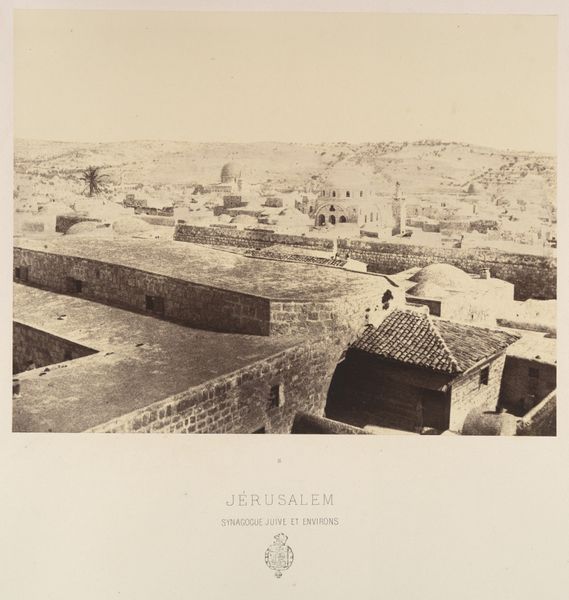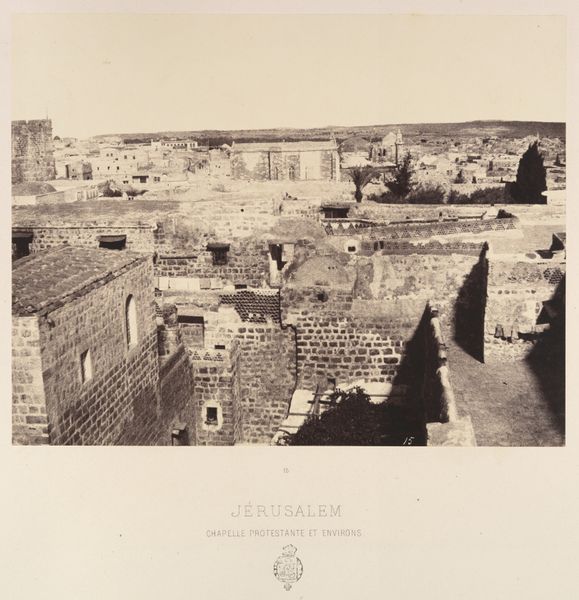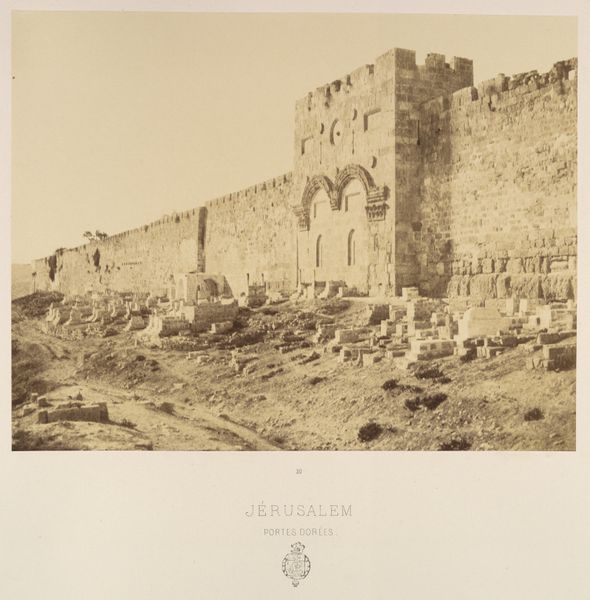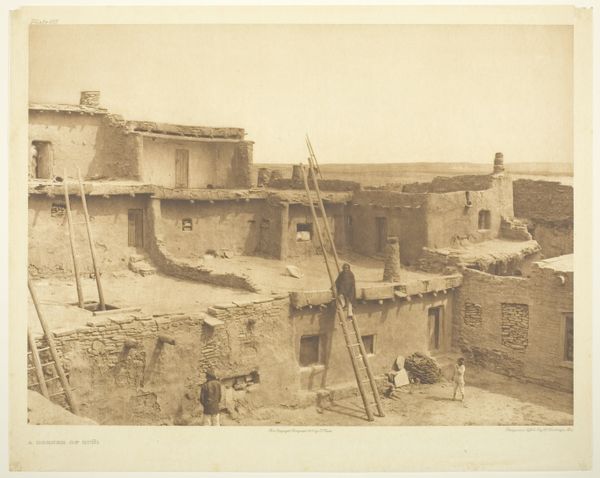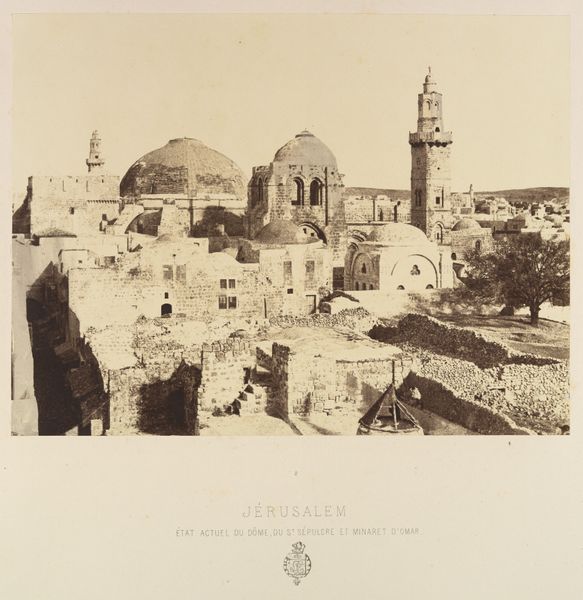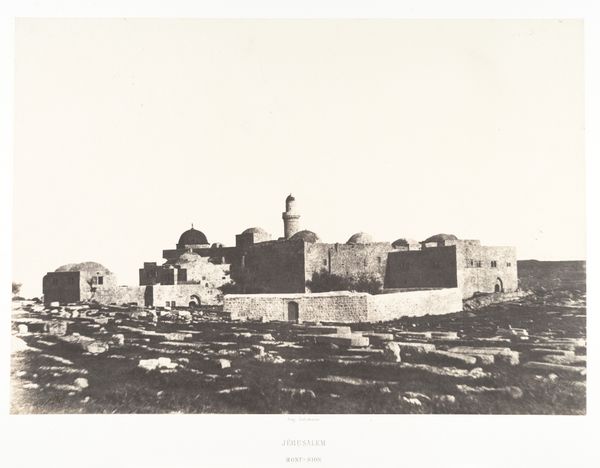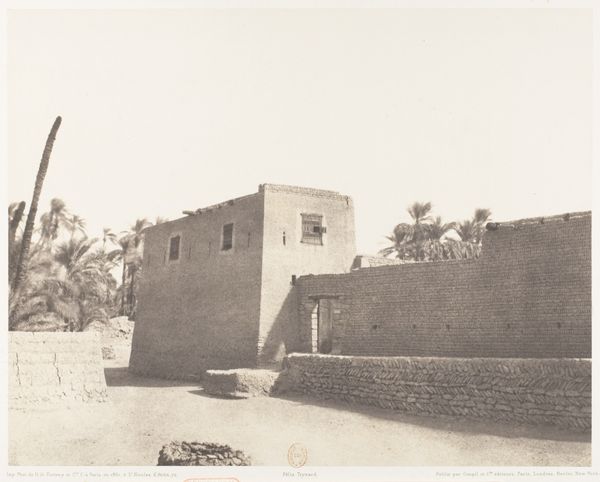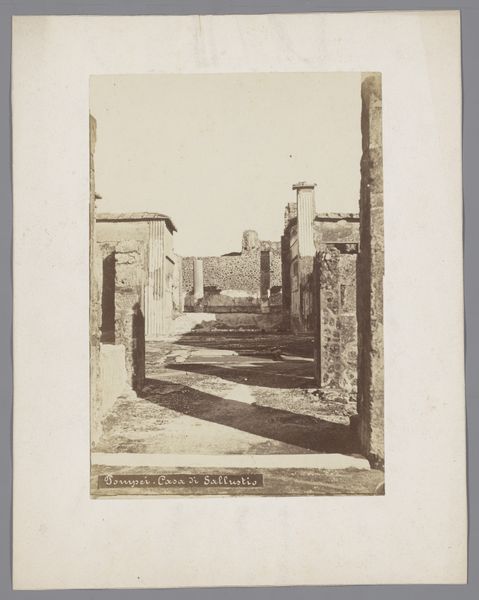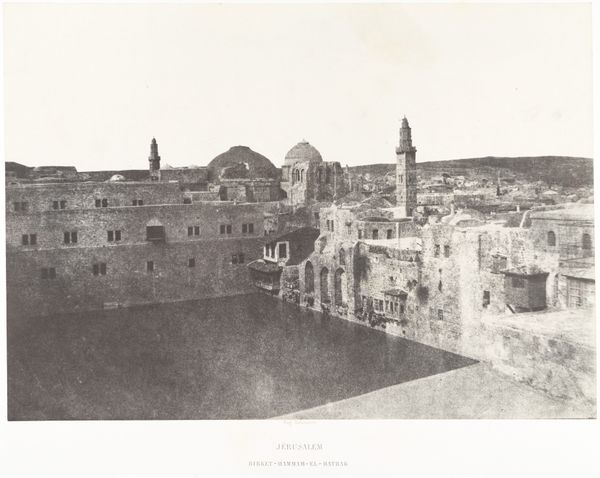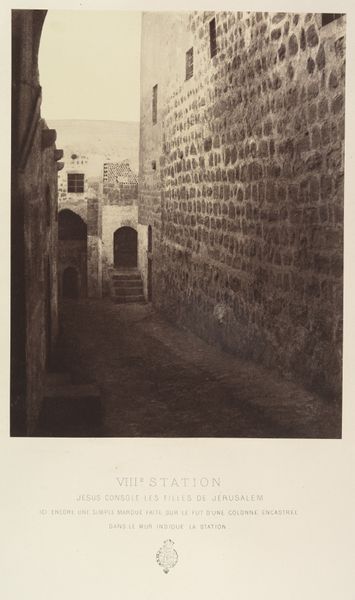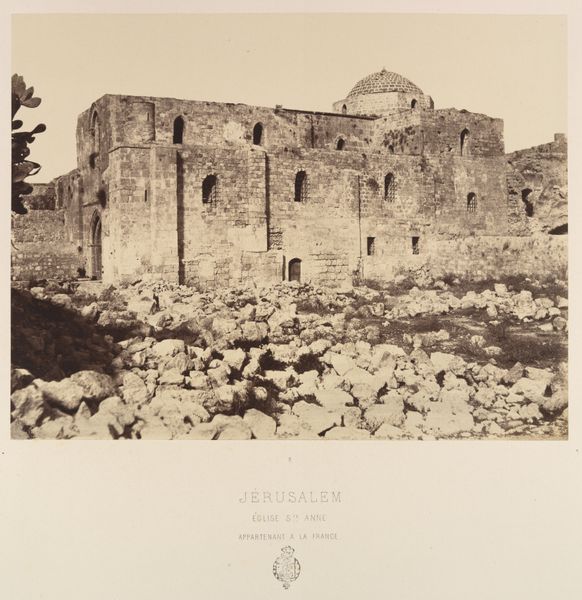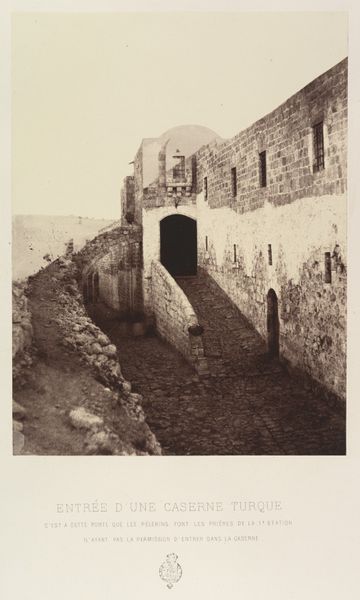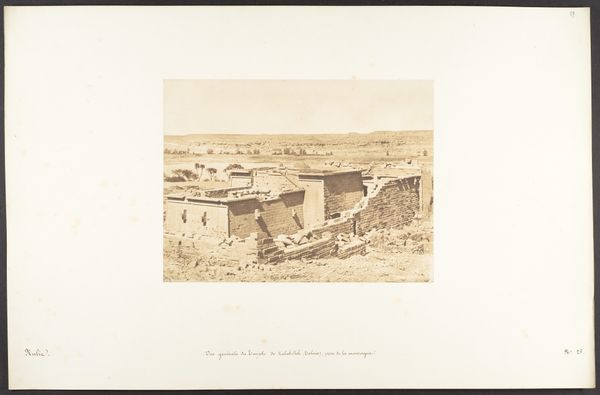
daguerreotype, photography, architecture
#
landscape
#
daguerreotype
#
photography
#
ancient-mediterranean
#
arch
#
cityscape
#
architecture
Dimensions: Image: 7 3/8 × 10 3/16 in. (18.8 × 25.8 cm) Mount: 17 15/16 × 23 1/4 in. (45.5 × 59 cm)
Copyright: Public Domain
Curator: Here we have Louis de Clercq's "Jérusalem. Vue des Remparts," a daguerreotype from 1860, currently residing at the Metropolitan Museum of Art. Editor: The first word that comes to mind is "solid." The architecture dominates everything, doesn’t it? So geometric, so imposing. A beautiful melancholy settles over it. Curator: Yes, those heavy, rectilinear forms of the city walls, contrasted with the simple dwellings below. De Clercq was a businessman with a keen interest in photography, wasn't he? It’s fascinating how a daguerreotype – this delicate, silvery image on metal – becomes a vehicle for portraying such a sturdy, historical place. Editor: Precisely! We're talking about a fairly painstaking process here, requiring skill and meticulousness. Preparing the silver-plated copper, sensitizing it to light with iodine fumes... De Clercq, or rather, his assistants, likely spent considerable time under the scorching sun, orchestrating these processes on location. Curator: I love the tonal range he achieves; those sepia tones lending a sense of antiquity, that whisper of time and memory. The ancient cityscape of Jerusalem emerging from the photographic chemistry… feels almost alchemical. It calls forth a sort of reverie about civilization’s weight and endurance. Editor: And think of the social context, the colonial gaze present. This image being made for consumption in Europe, a visual documentation of the "exotic" Holy Land. How the selection and framing, every part of making and distribution reinforced the cultural and political dynamics of that era. It is not only capturing stone, but reinforcing the material world. Curator: You’re right. Looking closer, you start noticing how empty of life the picture seems, all heavy and imposing as you pointed out initially. I am moved by what the photograph omits as much as it shows. That almost haunting, silent feel speaks loudly to me. Editor: I keep considering how tangible these silver plates are. Materiality dictates everything, down to the photographic real estate required and the atmospheric elements that leave their marks, the chemical processes as both art and science. Even now we still reflect this in production choices. Curator: I think its powerful to be reminded of time both geologic and lived as we examine such tangible art. Editor: It all brings us closer to understanding what makes objects, places, and especially images meaningful even now.
Comments
No comments
Be the first to comment and join the conversation on the ultimate creative platform.
